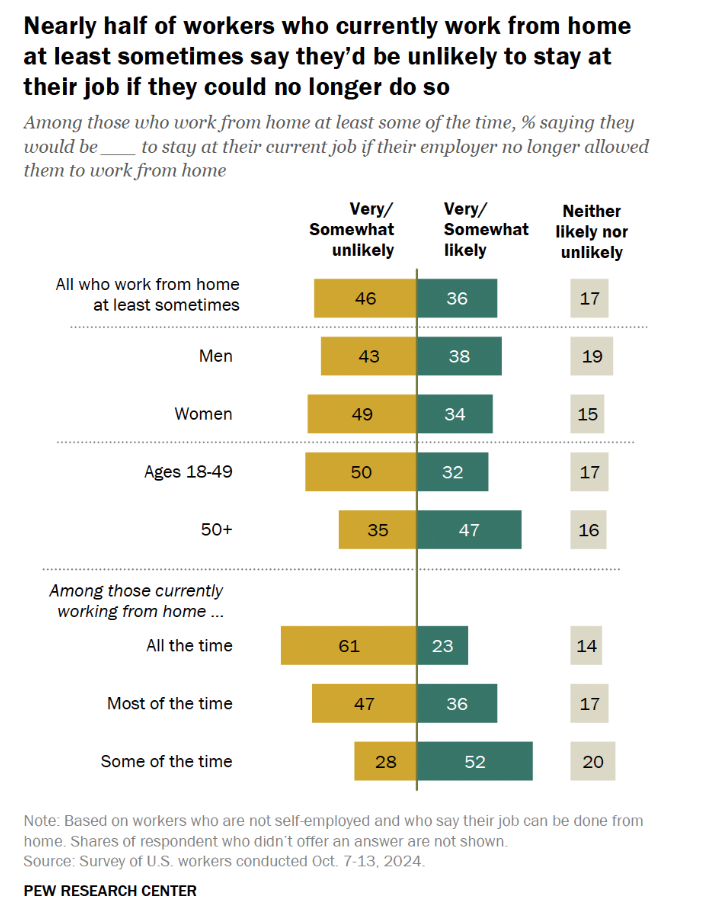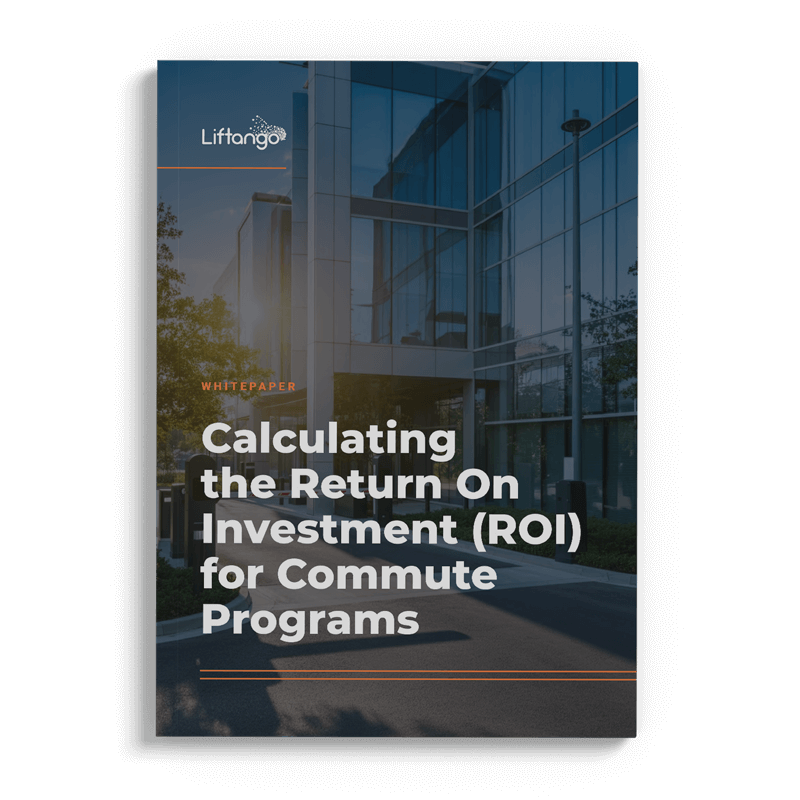As businesses navigate the return to office, sustainability is taking center stage. With longer commutes becoming the norm in hybrid work environments, leaders are asking: how can employee mobility align with corporate sustainability goals? The rise of the supercommuter is reshaping how we think about work, commuting, and carbon impact.
Recent data shows a clear trend towards more time in the office, with the number of workers required to be in the office surging to 75% in late 2024, but 78% of high performers having considered a career change due to their current office policies... How do we support employees while brining people back to the office? Could allowing super commutes be the answer?
In a post-pandemic landscape where remote work became not just viable but often preferable, many employees have relocated, sometimes far beyond the traditional commuter belt. The result? The rise of the “supercommuter” - individuals traveling hours (or even days) to spend a portion of their week in the office where hybrid working is in place.
But is this shift compatible with our environmental and wellbeing goals? And how can businesses support more sustainable commuting choices, especially as return-to-office (RTO) mandates gain momentum?
Recent data shows a clear trend towards more time in the office, with the number of workers required to be in the office surging to 75% in late 2024. Another study found that 72% of organizations have mandates for working in the office.
The Rise of the Supercommuter in Hybrid Work
The concept of supercommuting isn’t new, but it has exploded in recent years. A survey commissioned by Trainline Partner Solutions found that the number of UK rail supercommuters, those traveling 90+ minutes each way, has doubled since the pandemic.
The increase is largely enabled by hybrid working arrangements, with over four in five new supercommuters (84%) citing this as the reason for their change in commuting habits.
Anecdotes shared in a Sky News article highlight the extremes: one airline crew director commutes from a rural Welsh village to Manila, a journey that takes 24 hours. Another professional moved his family 260 miles away from London and now makes a three-day weekly commute back to the city, saying it’s worth it for the better quality of life.
While these examples are at the edge of the spectrum, they point to a growing shift in values - people are willing to travel further for a more balanced life.
The Carbon Footprint of Long Commutes: The Environmental Dilemma
Longer commutes, especially those involving cars or flights, carry a steep environmental cost. Every additional mile increases an individual’s carbon footprint, putting strain on corporate and national sustainability targets.
This is especially concerning at a time when global decarbonisation efforts are accelerating. In the UK, transport remains the largest emitting sector, and businesses are under increasing pressure to report, and reduce, Scope 3 emissions, which include employee commuting.
So while flexible working may offer lifestyle and productivity gains, it can also risk undermining environmental goals if not carefully managed.
How Employers Can Support Sustainable Commuting
Rethinking the role of employers.
Here lies a challenge, and an opportunity, for all of us.
As a partner to public transit systems, we believe in a collaborative approach to solving these challenges.
As return-to-office mandates resurface, leaders in HR, Facilities, and Corporate Real Estate must think beyond desk occupancy. The conversation needs to include:
- How employees get to the office
- What support systems are in place for longer-distance or complex commutes
- And how businesses can influence sustainable behaviours through commuter programs
The reality is, commuting is no longer one-size-fits-all. The traditional model of daily, short-distance travel has fractured. In its place is a more fragmented, flexible, and often longer-distance landscape - requiring new thinking and infrastructure.
The push to bring people back to the office is not without its challenges.
- Nearly half of workers who currently work from home “at least sometimes”, say they would be unlikely to stay at their job if they were no longer allowed to work remotely.
- This is particularly true for high performers, with 78% having considered a career change due to their current office policies.
- In fact, 63% of employees would even take a pay cut for the option to work remotely more often.

From Carbon Cost to Commuter Choice
So how can companies strike the right balance between sustainable commuting, employee wellbeing, and return-to-office mandates?
Rather than resisting supercommuting, there’s immense value in designing systems that support it more sustainably - both for employees and the planet.
Some strategies include:
- Corporate mobility programs: Imagine, employees effortlessly booking a ride in a shared shuttle, or finding a carpool partner through a simple app. These programs reduce single-occupancy car trips and make commuting easier and greener for everyone. They are also a great way to showcase our community and collaborations. These work great for the regular and short distance commuters.
- First and last mile solutions: Many supercommuters rely on trains or long-distance transport but struggle with the “last leg” of the journey. Providing first- and last-mile commuting solutions like shuttles, shared bikes, or microtransit can reduce reliance on cars and support green commuting initiatives.
- Commuter credits or incentives: Companies can reward greener travel choices, such as cycling, EV use, or public transport, to nudge employees toward lower-carbon options. An example includes Better Points and similar organizations who can be combined with technology to incentivise behaviour change.
- Flexible scheduling: Encouraging off-peak travel or compressed workweeks can also reduce congestion and environmental impact and reduce frequency of travel.
These solutions don't just solve a problem; they help attract and retain top talent in light of the stark pushback from employees on RTO, support ESG goals, and make the office a more accessible and inclusive place to be.

Supercomputing, Supercommuting, and the Big Picture
Interestingly, as some employees take on longer commutes, organizations are simultaneously investing in supercomputing and high-performance digital infrastructure to support more sophisticated remote and hybrid working.
This dual shift, toward supercommuting and investment in remote work infrastructure, shows how companies must balance physical presence with digital capability. But it speaks to the complexity of modern work: a world where digital performance and physical presence must coexist.
The question becomes less about whether we return to the office, and more about how we do it - responsibly, equitably, and sustainably.
Why Mobility Matters More Than Mandates
For employers, especially those with global footprints, the key takeaway is this: don’t just mandate a return - enable it.
While many companies are mandating a return to the office, this approach can create friction with employees. Less than half of employers (47%) and just over a third of employees (36%) believe that these return-to-office policies have been communicated well.
That means building infrastructure, policies, and partnerships that:
- Respect employees’ lifestyle choices
- Support flexible and efficient commuting
- Align with long-term sustainability goals
This isn’t a simple equation. There are trade-offs. But with the right commuter programs and a thoughtful approach, businesses can reduce emissions, support employee wellbeing, and future-proof their workforce strategies.
After all, innovation isn't just about technology - it's about solving real-world problems with smarter solutions.
Building a Sustainable Return to Office Strategy
The supercommuter may seem like an outlier today, but in many ways, they represent the future: a worker empowered by flexibility, enabled by infrastructure, and driven by lifestyle.
Rather than asking employees to revert to outdated commuting models, organizations now have the chance to redefine what a sustainable return to office looks like - and to lead by example.
Is it easy? No. But it’s possible. And with the right support, the daily commute, whether 20 minutes or 200 miles, can be part of a smarter, greener, more human way to work.
Want to learn more about sustainable commuting strategies? Explore our sustainable employee transportation programs for more information.
Visit our Resources page for tools, insights, and examples of how organisations are making mobility work for everyone.
%20(1).jpg)
